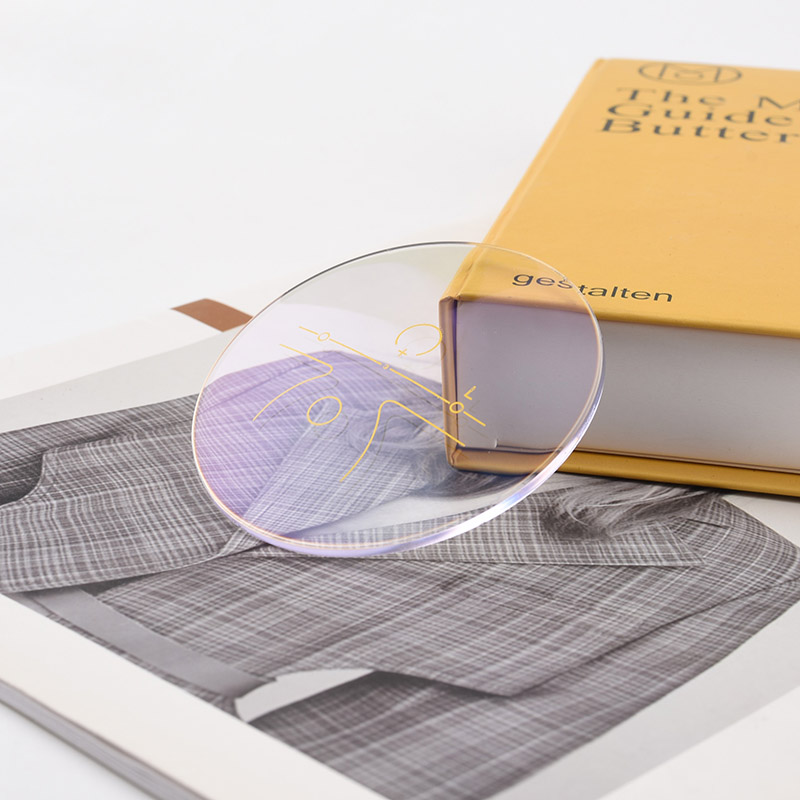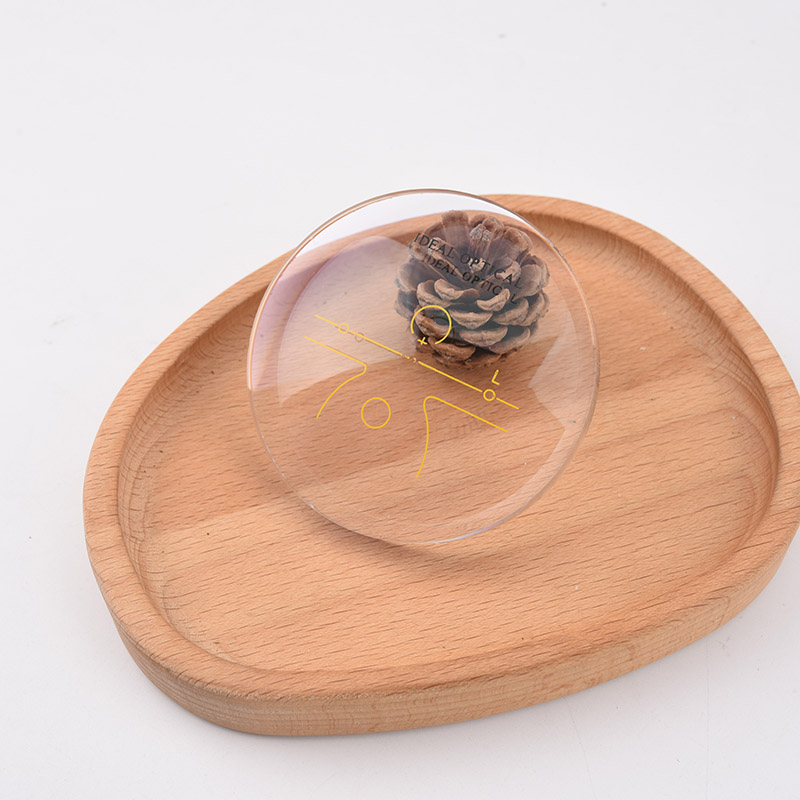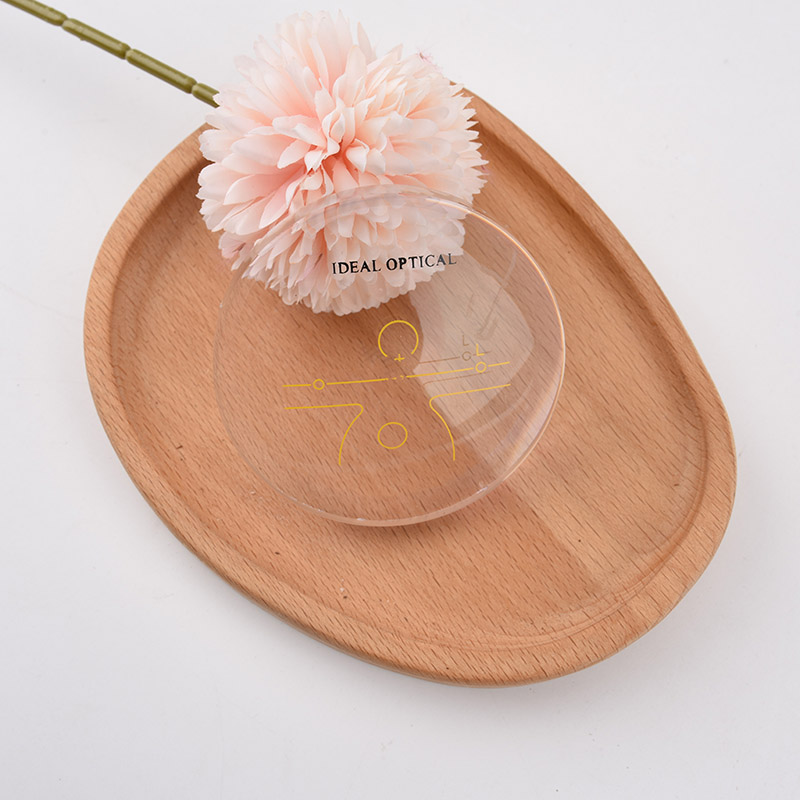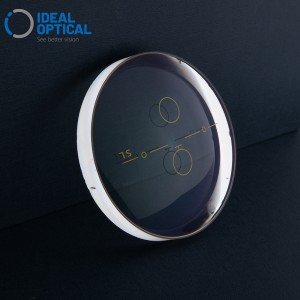
Products
IDEAL New Design Progressive Lens 13+4mm
| Product | IDEAL NEW DESIGN PROGRESSIVE LENS 13+4mm | Index | 1.49/1.56/1.60/1.67/1.74 |
| Material | CR-38/NK-55/MR-8/MR-7/MR-174 | Abbe Value | 58/38/42/38/33 |
| Diameter | 70/65mm | Coating | UC/HC/HMC/SHMC |
| Base | Customized or (N1.56)-1.48D;-3.59D;-4.59D; -6.02D; | ADD range | 0.75D~3.50D |
| Original 13+3mm | New generation 13+4 myopia | New generation 13+4 presbyopia | |
| Far Vision Zone | ★★★★☆ | ★★★★★ | ★★★★ |
| Middle distance transition zone | ★★★☆ | ★★★★☆ | ★★★★★ |
| Computer Reading | ★★★★ | ★★★★☆ | ★★★★★ |
| Reading Zone | ★★★★ | ★★★☆ | ★★★★ |
| Wearing adaptability | ★★★★ | ★★★★★ | ★★★★★ |
*Comparison of three progressive design performance indicators

1. We have widened the width of the remote measurement area to full caliber, providing the wearer with a better wearing experience and a wider field of vision;
2. Independent designs have been made for the near-use part and the far-use part, bringing a better wearing experience to the wearer;
3. The progressive channel is significantly wider, and the width of the 50-cavity channel and the 100-cavity channel has been optimized by about 15% compared with the original design;
4. Optimize the maximum astigmatism part of the blind area, and the ratio of maximum astigmatism to ADD is reduced from 95% to 71~76%.
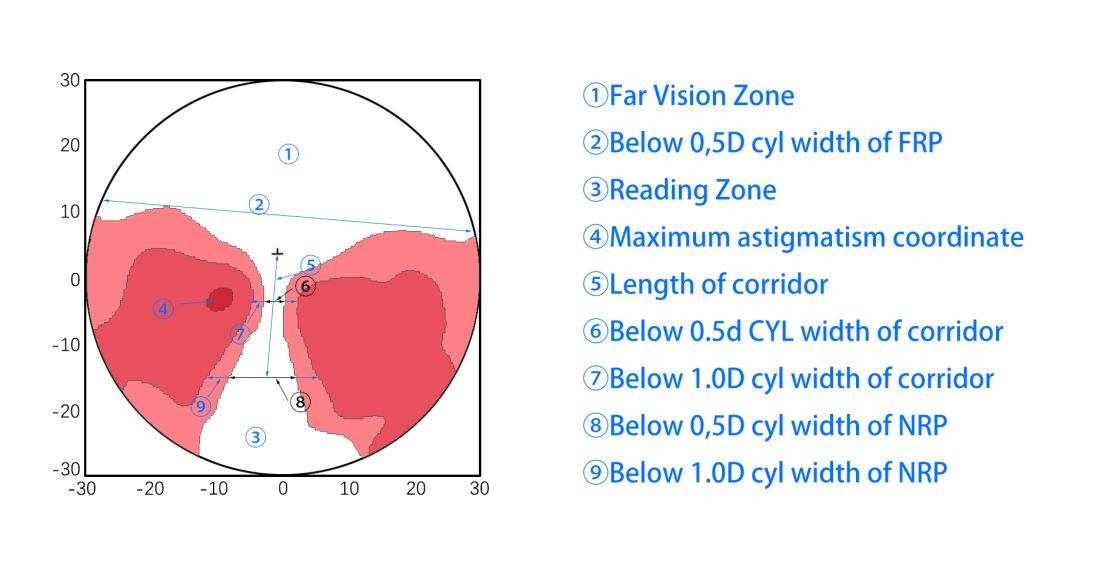
● Progressive lenses are designed with a gradual curve that allows the eyes to easily transition from one power to the next. This can help reduce visual distortion and provide a more natural viewing experience than traditional bifocal or trifocal lenses. When fitting for progressive lenses, an optometrist will take multiple measurements to ensure the lenses are positioned correctly on the framework. This is important as the incorrect placement can cause visual distortion or headaches.
